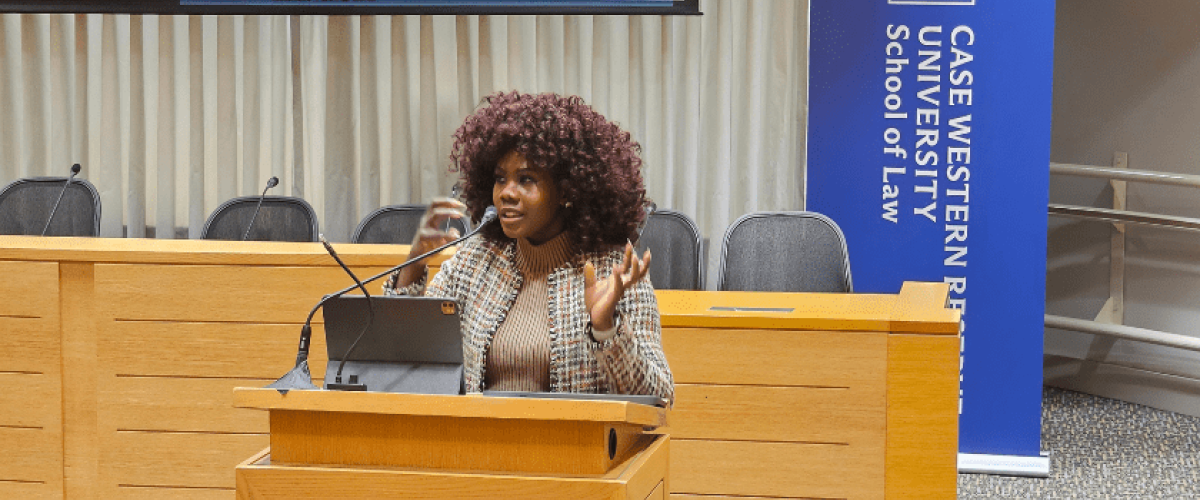Every community faces its own challenges—and often, the struggles are shared across boundaries. In mid-April, Case Western Reserve University School of Law students explored three Cleveland-area communities to see in person how leaders grapple with pressing land-use challenges. Local planning experts and community activists talked with students on a range of topics, including the gentrification of neighborhoods and lack of affordable housing; siting mixed-use development; providing waterfront access to the public; redlining; recovering from the mortgage crisis; and planning for the impacts of climate change.
Adjunct professor Beth Nagusky recounted the students’ experiences:
We began in the city of Euclid, legendary as the origin of the 1926 U.S. Supreme Court case Euclid v. Ambler Realty, which upheld the constitutionality of local zoning. Mayor Kirsten Holzheimer Gail and Planning and Development Director Patrick Grogan-Myers gave us a tour of the city, with Grogan-Myers pointing out how Euclid’s zoning and land uses had evolved over the past century and explaining the challenges facing the city. We then met with Planning and Development Coordinator Christine McIntosh, City Council President Charlene Mancuso, and individuals at the Euclid Historical Society and Museum to discuss the Euclid case itself and the city’s efforts to build a public-access trail over private waterfront property.
Next, we traveled to the Buckeye-Woodhill neighborhood on Cleveland’s near east side, a neighborhood that has been hard hit by historic redlining practices and then the foreclosure crisis. There, we met with Jim Rokakis and Isaac Robb. Rokakis is a former Cleveland City Council member and former county treasurer, the position in which he served when the foreclosure crisis hit. He went on to help enact state legislation creating land banks and co-write “The Land Bank Revolution” with Gus Frangos. Robb is vice president of planning and urban projects with the Western Reserve Land Conservancy. The two of them showed us several projects that the WRLC and Land Bank have undertaken to create open space and to restore abandoned houses across the neighborhood.
Finally, we traveled to Ohio City, where we met Bill Merriman, a deacon with St. Patrick’s Church who has been an activist in the neighborhood for over five decades. He showed us how the neighborhood has changed, in large part as a result of large developers buying properties and converting them to apartments and condominiums that are often unaffordable to the lifelong Ohio City residents. Merriman has spent decades advocating for the housing and community needs of those who grew up in the neighborhood as well as those who have come from other nations.
Valerie Katz, Cuyahoga County’s assistant director of sustainability, joined our bus trip around the city and, along the way, discussed common challenges facing communities and the county, as well as techniques being used to address them.





